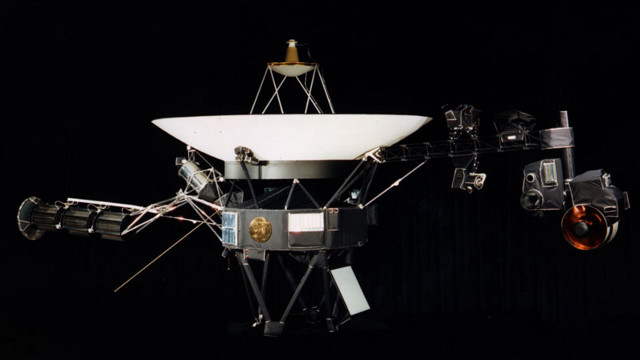SUMMARY
This is AI generated summarization, which may have errors. For context, always refer to the full article.

WASHINGTON DC, USA – The Voyager 1 spacecraft is approaching the outer limit of the solar system but remains months or even years away from the farthest reach of the sun’s magnetic pull, NASA said Thursday, June 27.
In the meantime, the US space agency’s pioneering craft launched in 1977 is sending back a wealth of data on the final frontier of the solar bubble – or heliosphere – which scientists have dubbed the magnetic highway.
“This strange, last region before interstellar space is coming into focus, thanks to Voyager 1, humankind’s most distant scout,” said Ed Stone, Voyager project scientist at the California Institute of Technology in Pasadena.
Three papers were published in the journal Science Thursday describing the last region that Voyager will cross before it enters interstellar space.
Voyager was about 11 billion miles (18 billion kilometers) away from the Sun — or 122 times the distances from the Earth to the Sun — when it reached the magnetic highway on August 25.
Also known as the depletion region, the magnetic highway allows charged particles to travel in and out of the heliosphere along a smooth magnetic field line instead of “bouncing round in all directions as if trapped on local roads.”
In the span of about 24 hours after Voyager reached the depletion zone, the magnetic field started to pile up with particles “like cars backed up on a freeway exit ramp,” researchers said.
“A day made such a difference in this region with the magnetic field suddenly doubling and becoming extraordinarily smooth,” said lead author Leonard Burlaga, who is based at NASA’s Goddard Space Flight Center.
“But since there was no significant change in the magnetic field direction, we’re still observing the field lines originating at the sun.”
Scientists were able to detect low-energy cosmic rays that originate from dying stars for the first time since Voyager left Earth.
Meanwhile, the number of charged particles detected started to drop off dramatically, especially the ones that were shooting straightest along solar magnetic field line.
“They decreased in intensity by more than 1,000 times, as if there was a huge vacuum pump at the entrance ramp onto the magnetic highway,” said Stamatios Krimigis, a physics professor at Johns Hopkins University who is the low-energy charged particle instrument’s principal investigator.
“We have never witnessed such a decrease before, except when Voyager 1 exited the giant magnetosphere of Jupiter, some 34 years ago.”
NASA has described Voyager 1 and its companion Voyager 2 as “the two most distant active representatives of humanity and its desire to explore.”
The twin Voyager craft – Voyager 2 was actually launched first, on August 20, 1977, followed by Voyager 1 on September 5 – were designed primarily to study the biggest planets in our solar system, Jupiter and Saturn.
Taking advantage of a planetary alignment, they fulfilled that mission before pushing on to Uranus and Neptune, beaming back stunning images of the first two in 1979 and 1980, and the latter pair in 1986 and 1989.
But with those jobs complete and both craft still functioning perfectly, project managers decided to keep mining information as the devices fly further into the void.
The scientists controlling Voyager 1 – whose 1970s technology gives it just a 100,000th of the computer memory of an eight-gigabyte iPod Nano – decided to turn off its cameras after it passed Neptune in 1989 to preserve power.
It continues to send daily radio reports, which take about 17 hours to reach Earth.
Assuming the craft continues to function normally, they will have to start turning off other on-board instruments from 2020, and it is expected to run out of power completely in 2025.
Voyager 2 is currently about 9 billion miles from the Sun and still well inside the heliosphere. – Rappler.com
Add a comment
How does this make you feel?


![[In This Economy] Can the PH become an upper-middle income country within this lifetime?](https://www.rappler.com/tachyon/2024/04/tl-ph-upper-income-country-04052024.jpg?resize=257%2C257&crop=295px%2C0px%2C720px%2C720px)


There are no comments yet. Add your comment to start the conversation.